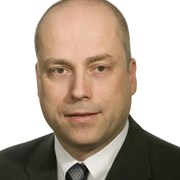The transient overvoltage stresses on components will increase due to the more flexible system topologies, more frequent switching operations, and increased usage of cables and power electronic converters. Safe implementation will require extensive computer simulations during its planning an engineering phases. Existing simulation tools have limited accuracy for representing some critical components such as transformers and cables. The project produced models that were sufficiently accurate and compatible with available circuit simulators, and made use of the models in system simulation studies in order to pinpoint bad configurations. The models is available for other users.
The main tasks of the project were:
- Review of future trends in land based and offshore power systems
- Improve component modeling
- Transformer modeling
- Cable modeling
- Circuit breaker modeling
- Instrument transformer modeling
- Grounding impedance
- Network equivalencing
- Perform demo simulations to investigate:
- system overvoltages caused by high-frequency interaction between cables and transformers (switching events and faults)
- winding overvoltages caused by restrikes in vacuum breaker
- phenomena related to energization and faults in power systems with long cables
Results
Partners
- SINTEF Energi AS (SINTEF Energy Research), Project Responsible
- The Norwegian Research Council
Industry Partners
- Statnett SF
- Statkraft Energi AS
- Hafslund Nett AS
- Nexans Norway AS
- Dong Energy Power
- Siemens Wind Power AS
- Vestas Wind Systems AS
- EDF (Électricité de France)
- RTE (Réseau de transport d'électricité)
- EirGrid PLC
- Siemens AG
Universities
- Norges Teknisk Naturvitenskapelige Universitet (NTNU)
- Technical University of Delft (TU Delft)

